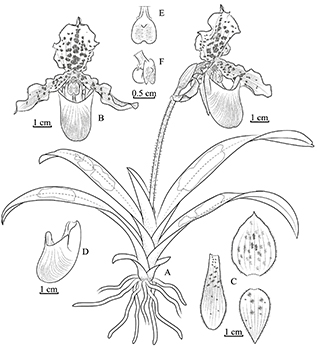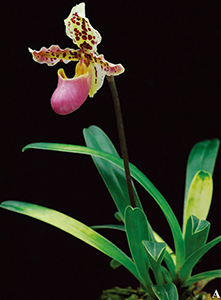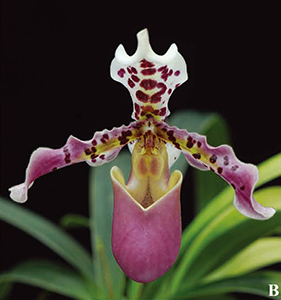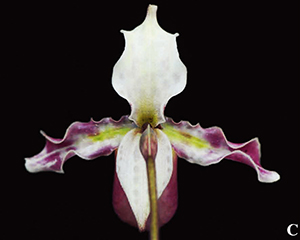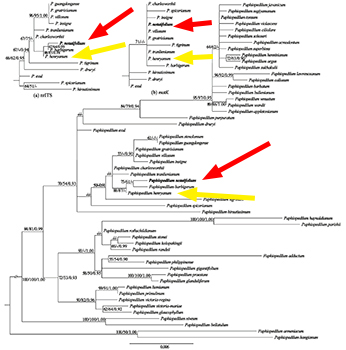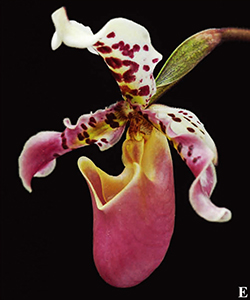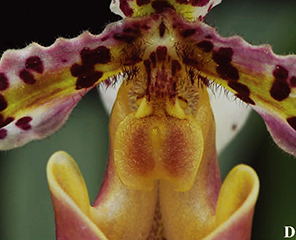This new species is morphologically similar to Paphiopedilum henryanum,
from which it differs by the smaller plants with large yellow spots on
the leaves, shorter scape, larger flower, white and narrower sepal and
light purple-red petals with larger purple spots and yellow-white margins.
Lithophytic herbs. Leaves 3–5, narrowly oblong, 8.0–17.0 × 1.2–2.0 cm,
apex unequally bilobulate, minutely tridenticulate, deep green, with large
yellow spots and purple markings at the base. Inflorescence arching, 8–10
cm long, green, densely purple-pubescent, terminally 1-flowered; floral
bract ovate, pale green, with small purple spots, 3.0–3.5 ×1.5–2.0 cm;
pedicel and ovary 3.3–4.0 cm long, green, densely purple-pubescent; flower
7.5–8.2 cm indiameter; dorsal sepal white with large purple spots; synsepal
white with purple spots; petals pale purple-red with large purple spots
and yellow-white margins; lip pale purple-red with yellow-white margins;
staminode pale purple with brownish-yellow margins and a yellow umbo; dorsal
sepal ovate, 3.5–3.8 ×2.4–2.7 cm margins minutely ciliate, recurved; synsepal
narrowly ovate-elliptic, 3.0–3.3 × 1.7–2.0 cm, minutely ciliate, apex bilobulate;
petals narrowly obovate-oblong, 4.0–4.3 × 1.4–1.6 cm long, margins undulate
and recurved, obscurely tridenticulate apically, minutely ciliate, with
long hairs at base; lip helmet-shaped; pouch ellipsoid, 3.5–4.0 × 1.9–2.2
cm, opening slightly auriculate on both sides; staminode obovate, 8–9 ×
6–7 mm, papillose, with a small umbo adaxially, apex emarginate.
Flowering period:—September–November.
Distribution and habitat:—In crevices of shady cliffs or rocks in evergreen broad-leaved forests in limestone
areas in southeastern Yunnan, China. |
180108
